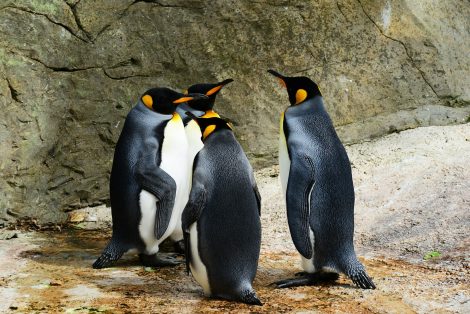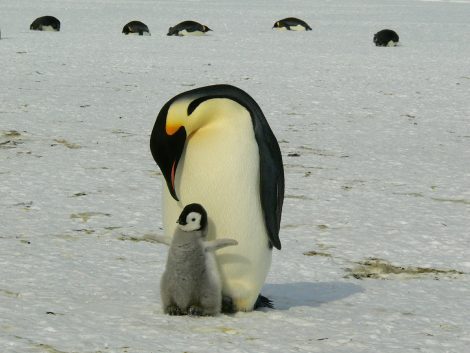When people see penguins surviving the harsh weather conditions of Antarctica, they often ask, do penguins have blubber? The answer is a resounding yes. Penguins have evolved to make it through the low temperatures, harsh winds, snow, and freezing waters. Their blubber plays a vital role in their survival as it helps them to retain body heat, works as a source of energy and even gives them protection from cold waters at various depths while hunting for fish or krill.
In this article, we are going to take a look at various uses of blubber for penguins and how it helps them in surviving and thriving in the Antarctic winters.
What is Penguin Blubber?
In simple terms, blubber is an additional layer of fat under the skin of several aquatic animals and penguins as well. The thickness of the layer of blubber depends on the size of the penguin. For larger penguins, the blubber can be at least 2-3 centimeters thick while the smaller penguins have blubber up to 1 cm thick.
The thickness of blubber also depends on the size of the penguin and the location where the penguin spends its time for roosting and raising chicks. For example, emperor penguins might have up to 30% of their body mass as blubber while smaller penguins like the African jackass might have little to no blubber on its body.
Penguins Have A Layer of Blubber Under Their Feathers
Penguins have feathers that help to keep air trapped near their skin that acts as insulation against wind and cold. But when penguins dive deep underwater to catch fish and krill, the trapped air slowly escapes from their feathers because of excessive pressure.
Even while exiting the water, penguins release air-bubbles from their feathers to smoothen their ascent through the water. At such times, the blubber is crucial in helping penguins to protect their internal organs from the harmful effects of cold water.
The layer of blubber is also useful to make the penguins look more attractive for mating. When looking for a mate, the female penguins will judge the penguin by their sounds and their size.
Penguins that look bigger because of layers of fat and blubber have more scope of surviving the fasting period while hatching the eggs. The penguins that look bigger have more chance of attracting a suitable mate.
Blubber Helps Penguins To Survive Harsh Antarctic Weather
After laying the eggs, the mother penguin is often away looking for food and the male penguins often fast for extended periods while they take care of the eggs. They cannot move and look for food, so the layer of blubber acts as a source of energy for them. The blubber also protects them from the harsh winds that can move up to 125mph when the penguins are huddling together to escape the cold Antarctic winds that lower temperatures up to -22°F.
As the father penguin fasts and waits for the mother’s return, he loses a large percentage of his body weight and it is only because of the excessive blubber and fat that he can take care of the eggs and usher in a new generation of penguins.
For penguins that live near the equator, there is no evolutionary advantage of blubber. Penguins like the Galapagos penguins and jackass penguins have a very thin layer of blubber on their bodies. In the case that a penguin feels hot, they spread out their wings and fluff their feathers to remove body heat and bring down their core temperature.
Conclusion
Blubber is an important part of the survival tactics of penguins. They are able to find their ideal mate by looking big because of the blubber and they can survive the harsh period of hatching their eggs by using the blubber as a source of energy.
The blubber on a penguin also helps it to survive the cold water temperature while diving for food. Blubber is an evolutionary advantage that allows penguins to survive the harsh weather conditions and raise their next generation.
So, what are your thoughts about how blubber helps penguins? If you have any more questions about the evolutionary advantages of blubber for penguins, please feel free to share your thoughts in the comments.
References
http://www.patrickdepinguin.com/penguins/flippers/
https://oceantoday.noaa.gov/animalsoftheice_emperorpenguin/
http://www.antarctica.gov.au/about-antarctica/wildlife/animals/adapting-to-the-cold
Image Source:

